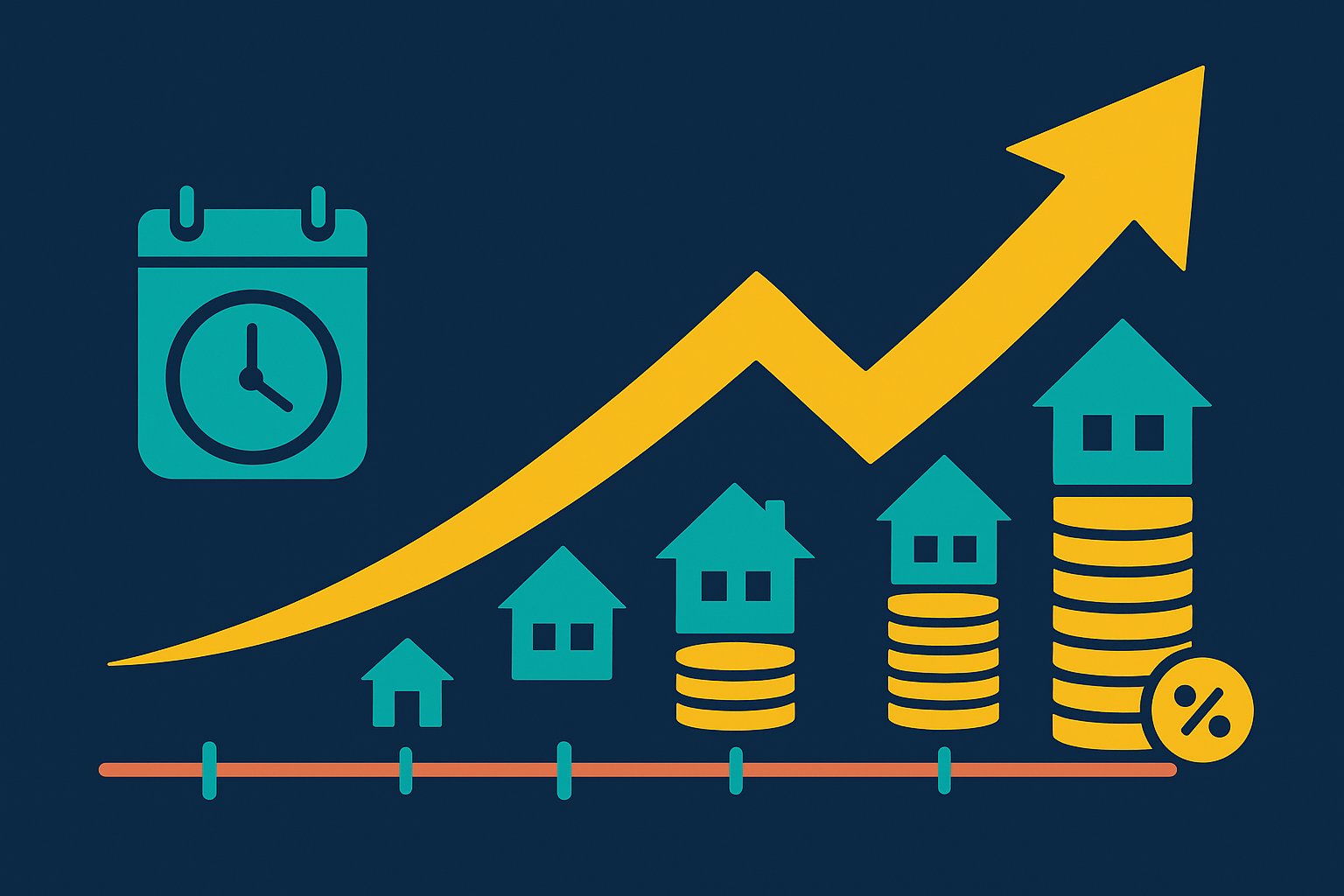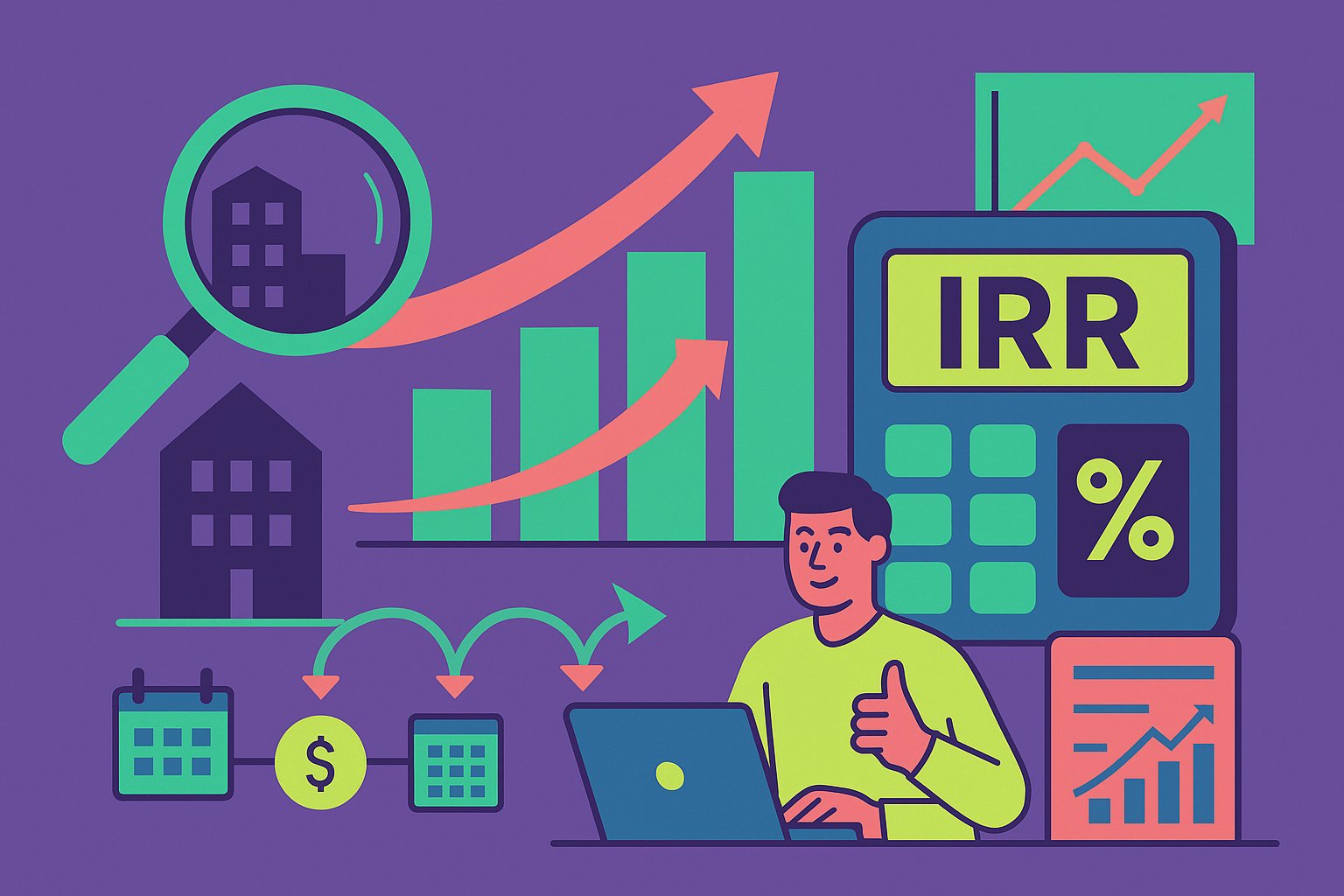Embracing the Timeline: Why Holding Periods Matter in Crowdfunding
When diving into real estate crowdfunding, newcomers often fixate on projected returns and sponsor track records, overlooking a fundamental factor: the holding period. This timeline—from capital deployment to final distribution—shapes every aspect of your investment experience, influencing cash flow cadence, risk exposure, and overall profitability. Whether you back short-term bridge loans, medium-hold value-add renovations, or long-term buy-and-hold rental plays, understanding how holding durations impact returns empowers you to align deal selection with your financial objectives. In this guide, we unravel the intricate relationship between timeline and performance, equipping you to make strategic crowdfunding decisions that optimize yield, manage liquidity, and balance risk.
Mapping the Lifecycle: Anatomy of a Holding Period
A holding period begins when your funds close on a crowdfunded property and ends when the asset is sold or refinanced and distributions are completed. Along the way, your capital weaves through phases: renovation or stabilization, rental operations or interest payments, and eventual exit proceeds. Short-term offerings—often 6 to 18 months—tend to be bridge loans or quick flips, delivering fixed interest or renovation profits in compressed cycles. Medium-term deals span two to five years, encompassing value-add renovations and lease-up phases, offering a blend of periodic income and appreciation. Long-term ventures extend beyond five years, focusing on stabilized rental cash flows and compounded equity growth. Each timeline carries distinct operational milestones, distribution frequencies, and risk dynamics, making timeline awareness critical from due diligence to deployment.
Cash Flow Cadence: Timing Distributions and Reinvestment
Holding period length directly determines when and how you receive cash flows. Short-term bridge debt deals often pay simple interest monthly or upon maturity, offering rapid—but sometimes modest—returns. Value-add equity plays distribute dividends quarterly or semi-annually during stabilization, followed by lump-sum sale proceeds at exit. Long-term buy-and-hold models emphasize consistent quarterly distributions from rental cash flows, creating an annuity-like income stream. For investors, these timing variations intersect with reinvestment opportunities: early exit in a flip deal means redeploying capital into new projects sooner, potentially compounding returns. Conversely, locked-up long-term capital may miss short-term high-yield deals but delivers stability. Recognizing how distribution schedules align with your broader investment plan enables you to harness reinvestment compounding or preserve liquidity as needed.
Unpacking Return Metrics: IRR, Equity Multiples, and Beyond
Different holding periods necessitate different return lenses. Internal Rate of Return (IRR) excels at comparing deals with varied timelines, annualizing cash flows to indicate efficiency, but can obscure total profit if durations differ widely. Equity Multiple—the ratio of total distributions to invested capital—highlights aggregate return without time value, favoring longer holds. Cash-on-Cash Return focuses on annual income relative to equity, making it intuitive for rental deals. Short-term flips may display modest cash-on-cash yields but high equity multiples when profits concentrate at exit. Long-term rentals often offer lower multiples but steady cash-on-cash returns. By blending these metrics—IRR for time efficiency, multiple for total gain, and cash-on-cash for income—you gain a holistic view, selecting holding periods that harmonize with your return priorities and tolerance for time risk.
Liquidity Dynamics: Balancing Flexibility and Yield
Liquidity—or the ease of accessing your capital—forms one side of the holding period equation. Shorter holds offer quicker liquidity events but may entail higher risk or narrower deal selection. Bridge loans and quick-turn renovations can return capital in under two years, catering to investors seeking dynamic portfolio rebalancing. However, these deals often demand precise timing and carry execution risks—contractor delays or market slowdowns can stretch schedules. Long-term rental investments deliver robust income streams but lock capital for extended periods, with limited early exit options. Some platforms introduce secondary markets or redemption windows, though often at a discount. Marrying your cash flow needs with deal timelines—perhaps maintaining a ladder of staggered holdings—ensures you balance access to funds with optimized yield.
Evolving Risk Profiles: Time as a Factor in Uncertainty
Holding periods influence risk exposure. Short-term projects confront concentrated execution risk—construction overruns, permit delays, or sudden market dips can swiftly derail returns. Projected IRRs in these deals often hinge on flawless execution and timely sales. Medium-term value-add plays smooth some volatility through stabilization phases but still depend on market absorption rates. Long-term rental ventures face macroeconomic cycles, regulatory shifts, and tenant turnover risks over years, yet benefit from diversified cash flows and property management buffers. Time also amplifies potential for external shocks—interest rate hikes, neighborhood gentrification, or unexpected vacancy spikes. Investors must calibrate risk tolerance to holding period: are you comfortable trusting a short runway to perfection, or does a longer horizon that weathers cycles better suit your style?
Tax Considerations: Holding Periods and Treatment of Gains
Taxation in real estate pivots on holding durations. Flip-type investments—held under one year—incur short-term capital gains taxed at ordinary income rates, eroding net returns. Properties held over one year qualify for long-term capital gains rates, often lower, boosting after-tax yields. Depreciation deductions apply to rental holdings, sheltering income during the hold, while cost segregation studies can accelerate benefits in early years. Longer holds compound depreciation advantages but may trigger depreciation recapture taxed at higher rates upon sale. Strategic planning—such as staggering sale events to optimize gain recognition or leveraging 1031 exchanges to defer taxes—requires timeline awareness. Aligning holding periods with favorable tax brackets and planning for recapture implications elevates effective returns and harmonizes exit timing with your broader tax strategy.
Strategic Alignment: Defining Goals and Matching Timelines
Your personal financial goals should dictate ideal holding periods. If you crave rapid capital turnover to fuel entrepreneurial pursuits or seasonal opportunities, short-term flips and bridge loans deliver swift payouts. For steady income to supplement living expenses or retirement streams, medium-term dividend-producing renovations or long-term rental cash flows excel. Growth-oriented investors focused on equity appreciation might favor value-add holds of three to five years, capturing renovation upside while still offering moderate liquidity. By articulating clear objectives—monthly income, capital preservation, or accelerated growth—you can screen crowdfunding deals by their timelines, avoiding mismatches that frustrate expectations. A balanced portfolio might include a laddered structure: quick-turn assets for agility, medium holds for growth, and long-term rentals for stability.
Portfolio Construction: Ladders, Diversification, and Timeline Management
Building resilience into your crowdfunding portfolio involves laddering across holding periods. Allocate portions of capital to short, medium, and long-term deals, staggering expected exit dates to create a continuous flow of redeployable funds. This approach mirrors bond laddering, smoothing liquidity and reducing concentration risk. Diversifying across sponsors, markets, and project types further insulates against timeline slippages—if one deal overruns, others may mature as planned. Platforms offering model portfolios or automated allocation tools can simplify this process, balancing exposures according to your target distribution schedule. Through deliberate timeline management, you harness the unique advantages of each holding period while mitigating the impact of any single deal’s delay or underperformance.
Case Studies: Holding Periods in Real-World Crowdfunding Deals
Consider a six-month bridge loan funding a commercial refinance: investors receive 9 percent interest upon maturity. While returns are modest compared to equity deals, the short horizon lets capital recycle rapidly into new opportunities. Contrast that with a four-year value-add multifamily play offering quarterly dividends and a projected 2.0x equity multiple at exit. Here, cash flows taper in early stabilization phases, but total profit potential justifies the medium hold. Finally, a ten-year rental syndication promises consistent quarterly distributions with gradual rent escalation, delivering a blend of yield and long-term appreciation. By examining these scenarios—rapid-turn, mid-term, and extended-hold—you grasp how timeline choices create distinct return pathways, each aligned with different investor aspirations.
Monitoring Progress: Adapting to Timeline Shifts
Even the best-laid timeline can veer off course due to construction delays, permitting holdups, or shifting market conditions. Active monitoring—through platform dashboards, sponsor updates, and quarterly reports—alerts you to timeline deviations. When delays occur, sponsors should transparently communicate revised completion dates, budget overruns, and risk mitigants. Prepared investors anticipate potential extensions, factoring in backup plans or contingency reserves for liquidity. In some cases, deals offer rate bumps or extension fees to compensate for timeline slippage. Engaging with sponsors and understanding extension mechanisms ensures you’re not caught off-guard by calendar shifts, preserving trust and allowing you to adjust your portfolio’s ladder as needed.
Crafting Your Optimal Timeline Strategy
Mastering the impact of holding periods on crowdfunding returns culminates in a personalized timeline strategy. Start by defining your cash flow needs, risk tolerance, and growth objectives. Map out a laddered portfolio with allocations to short, medium, and long-term holdings, ensuring capital recycling aligns with your investment goals. Develop targeted IRR and equity multiple hurdles for each timeline category, using them as filters when evaluating new deals. Schedule quarterly or annual reviews to rebalance exposures, reinvest matured capital, and adjust for evolving market conditions. By treating holding period management as an ongoing strategic exercise, you transform timeline choices from afterthoughts into powerful levers for optimizing returns and liquidity.
Looking Ahead: Trends Shaping Future Holding Periods
The real estate crowdfunding landscape continues to innovate, with trends that may reshape holding period dynamics. Platforms are experimenting with tokenized assets enabling near-instant secondary market exits, potentially compressing effective timelines and boosting liquidity. Hybrid structures that blend debt and equity components may offer mezzanine-like instruments with intermediate durations and blended yield profiles. Data analytics and AI-driven underwriting could refine projected stabilization periods, reducing uncertainty around renovation timelines. By staying attuned to these advances, you position yourself to harness new products that align with your preferred timelines, further fine-tuning the balance between access to capital and optimized returns.
Time as Your Strategic Ally
Holding periods are far more than mere calendar markers—they are the backbone of your crowdfunding return profile, dictating cash flow rhythms, risk exposures, tax treatments, and reinvestment pathways. By mastering how timelines impact IRR, equity multiples, and cash-on-cash returns, you gain the precision needed to select deals that resonate with your financial aspirations. Through strategic laddering, proactive monitoring, and timeline-driven portfolio construction, you transform time from a neutral factor into a potent strategic ally. As real estate crowdfunding evolves, your ability to navigate and optimize holding periods will distinguish you as a sophisticated investor, capable of crafting resilient, high-performing portfolios that thrive across market cycles.




